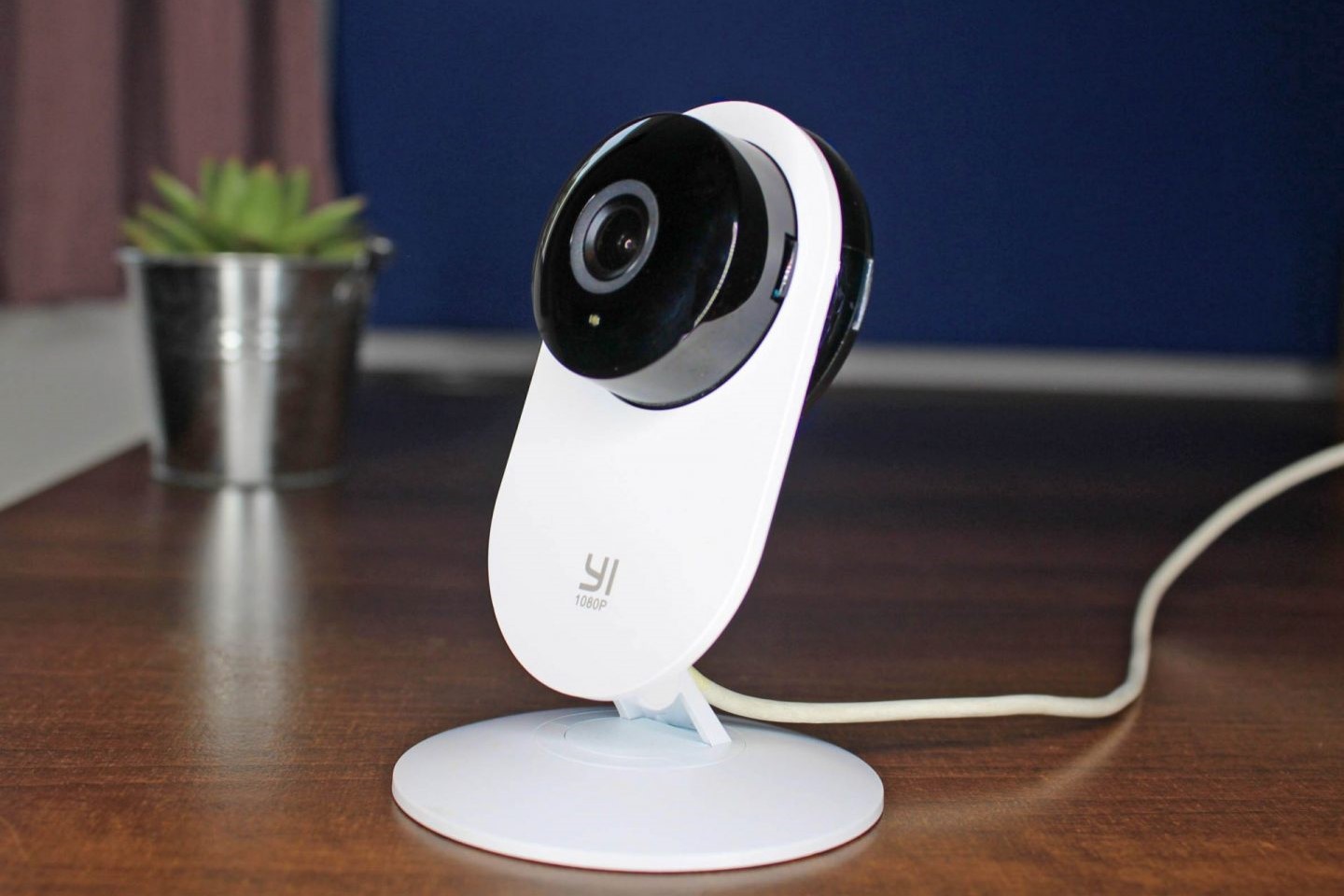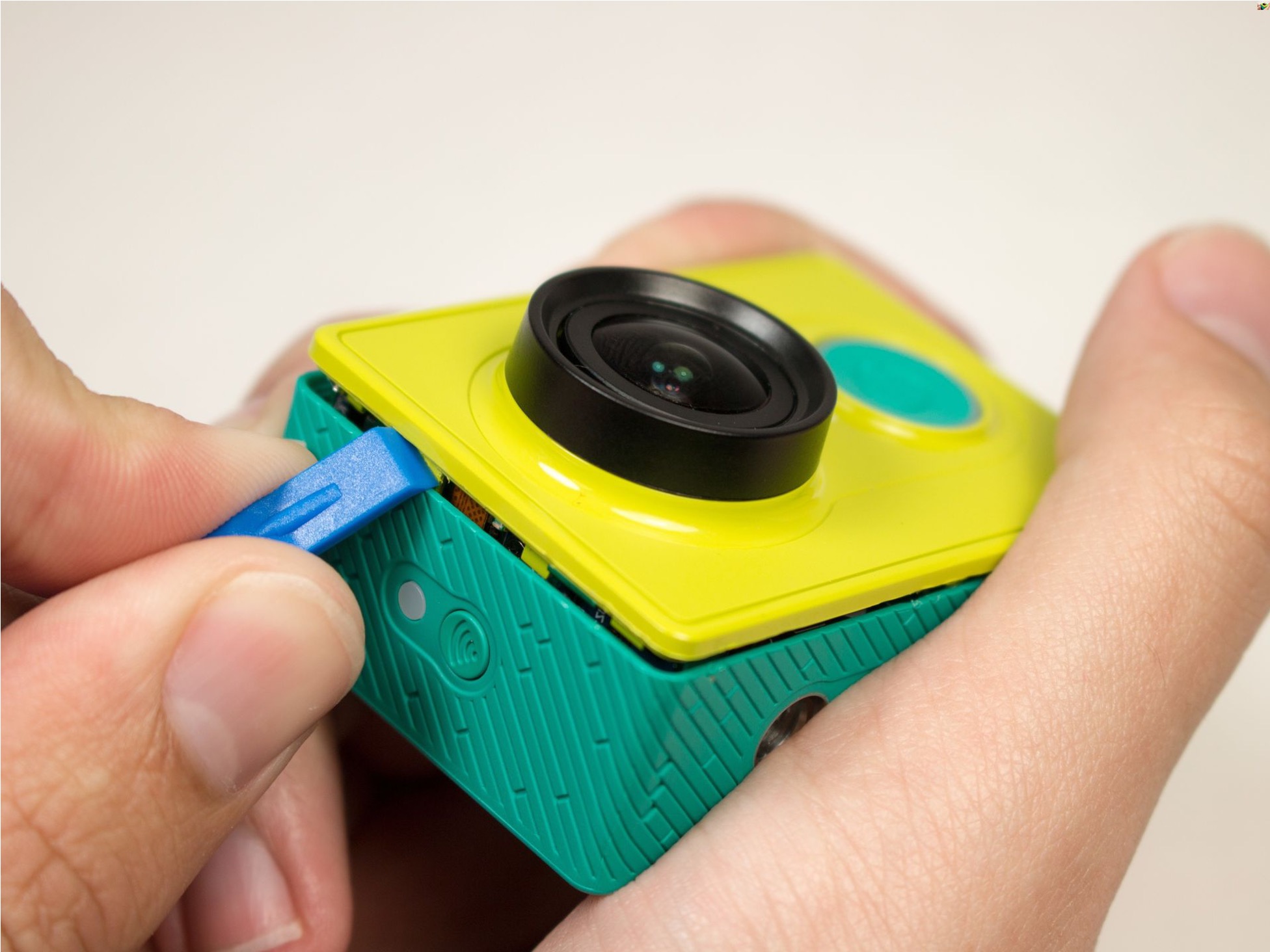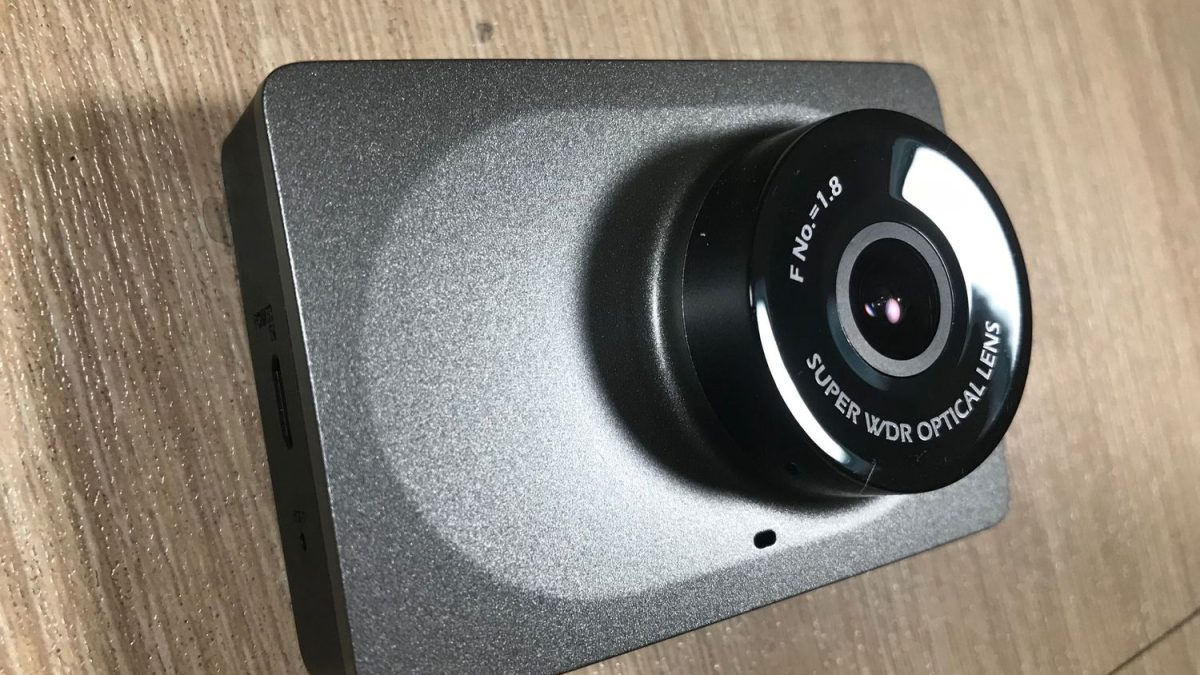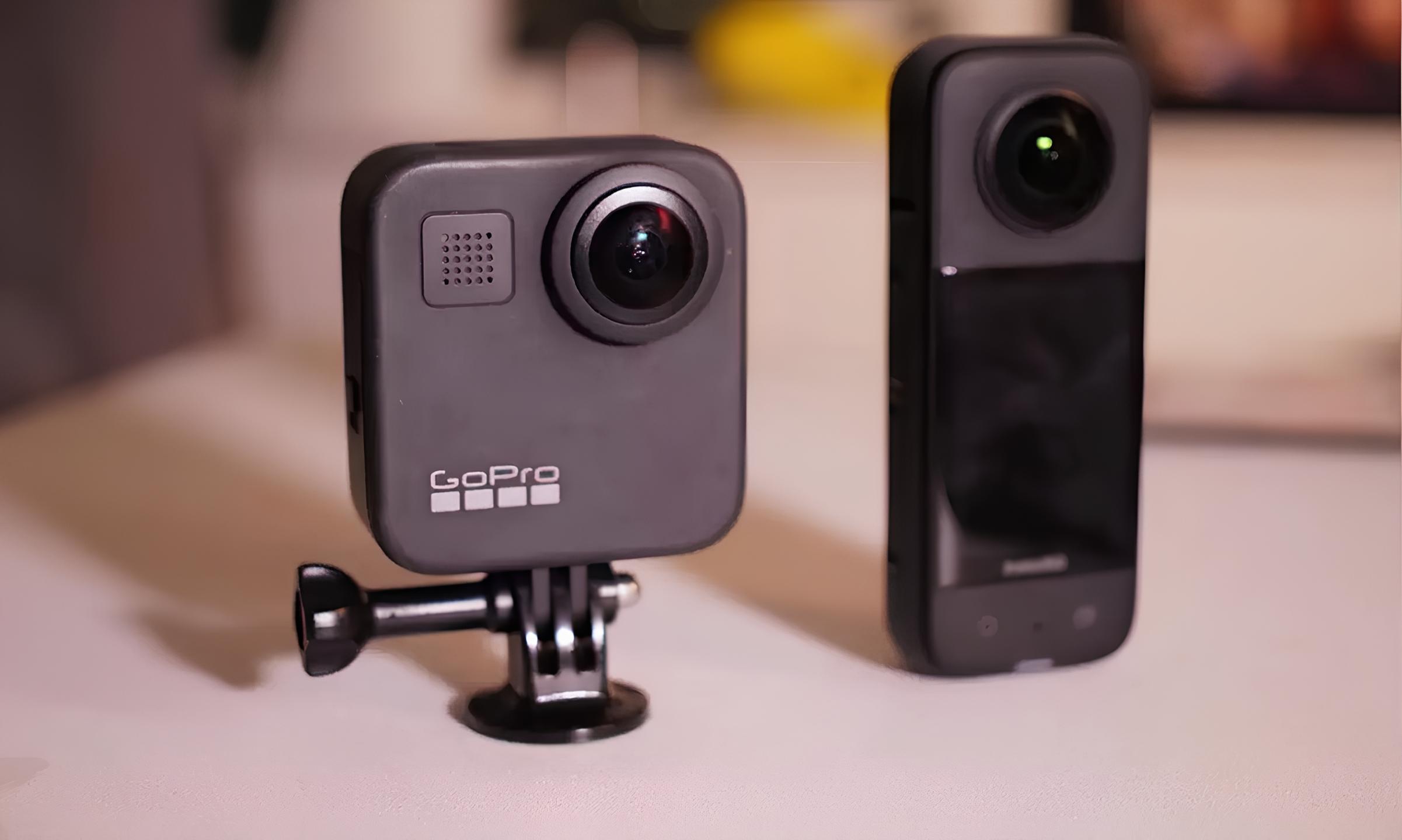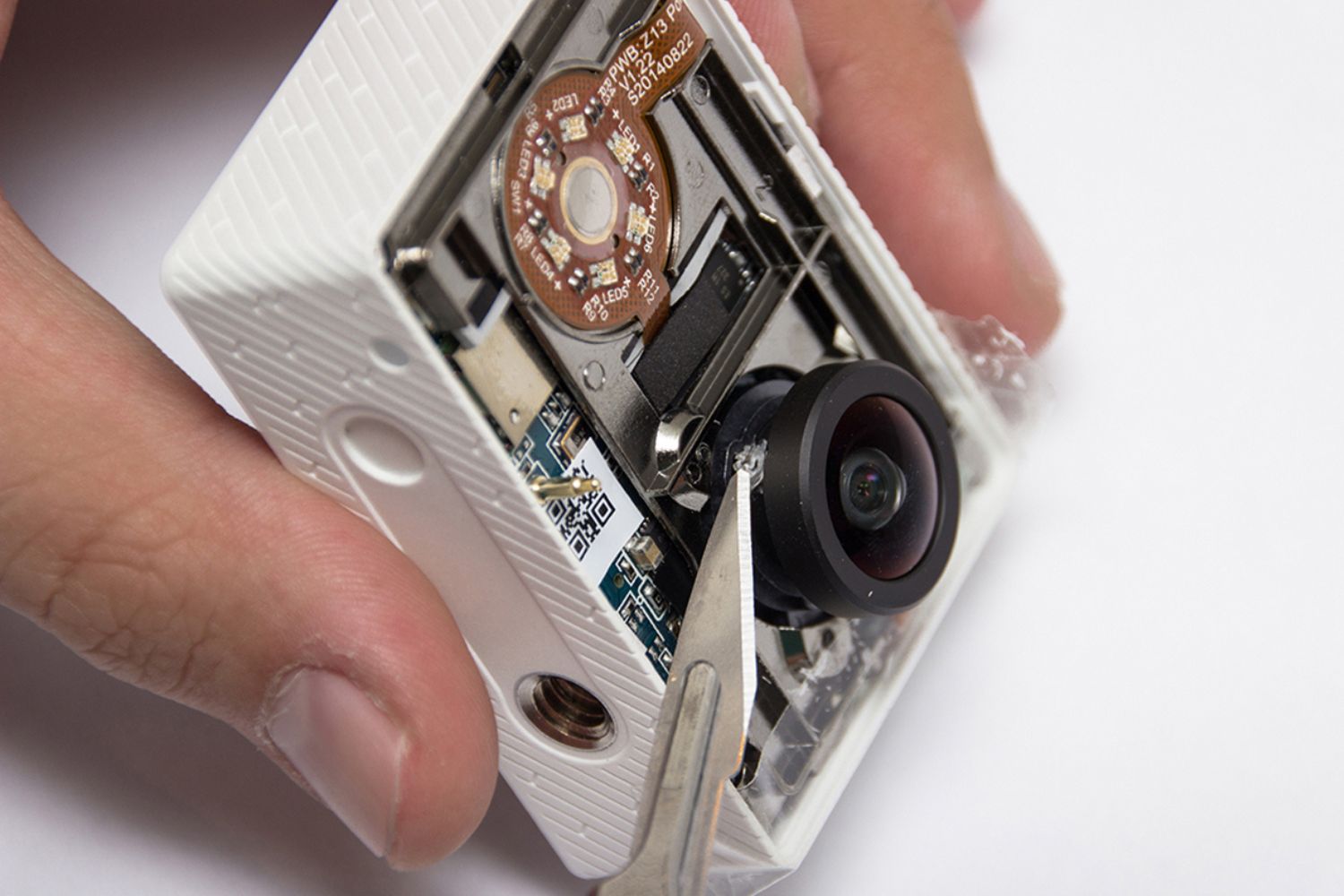Introduction
The Xiaomi Yi security camera is a popular choice for homeowners and businesses seeking reliable surveillance solutions. With its advanced features and user-friendly interface, this device offers peace of mind by providing real-time monitoring and recording capabilities. However, like any electronic device, the Xiaomi Yi camera may encounter various issues that can disrupt its functionality. From connectivity problems to audio and video quality issues, troubleshooting these concerns is essential to ensure the camera operates at its full potential.
In this comprehensive guide, we will delve into the common issues that users may encounter with the Xiaomi Yi security camera. By understanding the potential challenges and learning how to diagnose and resolve them, users can effectively maintain the optimal performance of their security camera. Whether it's addressing connectivity issues, troubleshooting video quality problems, or resolving power and charging concerns, this article aims to equip users with the knowledge and solutions needed to overcome these challenges.
By exploring the troubleshooting techniques and practical solutions provided in this guide, users can gain a deeper understanding of their Xiaomi Yi security camera's functionality. This knowledge empowers users to address issues proactively, ensuring that their security camera continues to deliver reliable performance and peace of mind. Let's embark on this journey to diagnose and fix common issues with the Xiaomi Yi security camera, enabling users to make the most of this innovative surveillance technology.
Common Issues with Xiaomi Yi Security Camera
The Xiaomi Yi security camera is a versatile and reliable surveillance device, but users may encounter various common issues that can impact its performance. Understanding these potential challenges is crucial for effectively diagnosing and resolving them. Here are some of the most prevalent issues that users may face with the Xiaomi Yi security camera:
-
Connectivity Problems: Users may experience difficulties in establishing a stable connection between the camera and their mobile device or Wi-Fi network. This can lead to intermittent or disrupted monitoring capabilities, impacting the camera's effectiveness in providing real-time surveillance.
-
Video Quality Problems: Issues related to video quality, such as pixelation, blurriness, or distorted images, can compromise the camera's ability to capture clear and detailed footage. Poor video quality may hinder the camera's effectiveness in monitoring and recording activities within its surveillance range.
-
Audio Problems: The Xiaomi Yi security camera is equipped with audio recording capabilities, and users may encounter issues related to sound quality, including static, distortion, or complete audio loss. Addressing these audio problems is essential for comprehensive surveillance and monitoring purposes.
-
Power and Charging Concerns: Users may face challenges related to power supply and charging, such as rapid battery drainage, difficulty in charging the device, or power-related malfunctions. These issues can impact the camera's reliability and continuous operation.
By acknowledging these common issues, users can proactively identify and address any challenges that may arise with their Xiaomi Yi security camera. In the following sections, we will delve into the process of diagnosing these problems and providing effective solutions to ensure the optimal performance of the security camera.
Diagnosing the Problem
When encountering issues with the Xiaomi Yi security camera, the first step is to accurately diagnose the problem. This involves a systematic approach to identify the root cause of the issue and determine the specific nature of the problem. By effectively diagnosing the problem, users can streamline the troubleshooting process and implement targeted solutions to address the underlying issues.
Connectivity Problems
For connectivity issues, users should begin by checking the Wi-Fi signal strength and network stability in the camera's location. Weak or unstable Wi-Fi signals can lead to intermittent connectivity problems. Additionally, ensuring that the camera's firmware and mobile app are updated to the latest versions is essential for compatibility and optimal performance. Users should also verify that the camera is within the recommended Wi-Fi range and that there are no physical obstructions hindering the signal.
Video Quality Problems
When diagnosing video quality problems, users should inspect the camera lens for any smudges, dirt, or obstructions that may affect image clarity. Adjusting the camera's positioning and ensuring proper lighting conditions in the surveillance area can also significantly impact video quality. Furthermore, checking the camera's resolution settings and adjusting them to the appropriate levels for the intended surveillance purpose can help address video quality issues.
Audio Problems
To diagnose audio problems, users should examine the microphone and speaker components of the camera for any physical damage or obstructions. Verifying the audio settings within the camera's app and ensuring that the microphone is not muted or obstructed by external factors is crucial. Additionally, testing the camera's audio recording capabilities in different environments can help identify and isolate any audio-related issues.
Power and Charging Concerns
When facing power and charging concerns, users should inspect the camera's power source, whether it's battery-powered or connected to a power outlet. Checking the integrity of the power cable, adapter, and power source is essential to diagnose charging issues. Users should also monitor the camera's battery health and assess any abnormal battery drainage patterns that may indicate underlying power-related problems.
By meticulously diagnosing the specific issues related to connectivity, video quality, audio, and power, users can gain valuable insights into the root causes of the problems affecting their Xiaomi Yi security camera. This diagnostic process serves as a foundational step in effectively resolving these issues and restoring the camera's optimal functionality.
Fixing Connectivity Issues
Addressing connectivity issues with the Xiaomi Yi security camera is essential to ensure seamless real-time monitoring and surveillance capabilities. When encountering connectivity problems, users can implement several effective solutions to restore stable connections and optimize the camera's performance.
-
Wi-Fi Signal Strength and Network Stability: Users should start by assessing the Wi-Fi signal strength and network stability in the camera's location. Ensuring a strong and stable Wi-Fi signal is crucial for maintaining consistent connectivity. Users can consider relocating the camera closer to the Wi-Fi router or installing Wi-Fi signal boosters to enhance signal strength in the surveillance area.
-
Firmware and App Updates: Verifying that the camera's firmware and the accompanying mobile app are updated to the latest versions is vital for compatibility and optimal performance. Regular firmware and app updates often include bug fixes and enhancements that can improve connectivity and overall functionality.
-
Wi-Fi Range and Obstructions: Users should confirm that the camera is within the recommended Wi-Fi range and that there are no physical obstructions, such as walls or large objects, hindering the Wi-Fi signal. Relocating the camera to a more open and unobstructed area can significantly improve connectivity.
-
Network Bandwidth Allocation: In environments with multiple connected devices, users can prioritize the camera's network bandwidth allocation to ensure a stable and dedicated connection. Adjusting the router settings to prioritize the camera's traffic can mitigate connectivity issues caused by network congestion.
-
Router Configuration and Security Settings: Reviewing the router's configuration and security settings is crucial to identify any compatibility issues or security protocols that may affect the camera's connectivity. Users should ensure that the router's settings align with the camera's connectivity requirements and that any firewall or security settings do not impede the camera's communication with the network.
By implementing these solutions, users can effectively address connectivity issues and optimize the performance of their Xiaomi Yi security camera. Proactively troubleshooting and resolving connectivity challenges ensures that the camera maintains reliable and uninterrupted surveillance capabilities, providing users with peace of mind and enhanced security monitoring.
Troubleshooting Video Quality Problems
When users encounter video quality problems with their Xiaomi Yi security camera, it can significantly impact the camera's effectiveness in capturing clear and detailed footage. Addressing these issues requires a systematic approach to diagnose and implement targeted solutions to restore optimal video quality.
Inspecting the Camera Lens and Positioning
One of the initial steps in troubleshooting video quality problems is to inspect the camera lens for any smudges, dirt, or obstructions that may affect image clarity. Cleaning the lens with a soft, lint-free cloth can help remove any accumulated debris and improve the overall image quality. Additionally, ensuring that the camera is positioned correctly and free from physical obstructions can significantly impact video clarity. Users should adjust the camera's positioning to achieve the desired surveillance angle and minimize any potential obstructions that may hinder the camera's field of view.
Assessing Lighting Conditions
Proper lighting conditions play a crucial role in ensuring high-quality video footage. Users should evaluate the lighting in the surveillance area and make adjustments as needed to optimize video quality. In low-light environments, utilizing external lighting sources or infrared illumination can enhance the camera's ability to capture clear footage, especially during nighttime surveillance. Adjusting the camera's exposure settings to accommodate varying lighting conditions can also contribute to improved video quality.
Verifying Resolution Settings
Checking and adjusting the camera's resolution settings to align with the intended surveillance purpose is essential for optimizing video quality. Users should ensure that the camera is set to the appropriate resolution based on the surveillance requirements. Higher resolution settings can deliver sharper and more detailed footage, especially when capturing distant or small objects within the camera's field of view. However, users should consider the trade-off between higher resolution and potential storage and bandwidth requirements.
Network Bandwidth and Data Compression
In scenarios where the camera's video feed is transmitted over a network, users should assess the available bandwidth and consider the impact of data compression on video quality. Adjusting the camera's compression settings and ensuring sufficient network bandwidth allocation can mitigate potential degradation in video quality during transmission. Users can also explore network optimization techniques to prioritize video data transmission and minimize potential bottlenecks that may affect video quality.
By meticulously troubleshooting video quality problems through these comprehensive steps, users can effectively restore the Xiaomi Yi security camera's ability to capture clear and detailed footage. Proactively addressing video quality concerns ensures that the camera maintains its effectiveness in monitoring and recording activities within its surveillance range, ultimately enhancing the overall security and surveillance capabilities.
Addressing Audio Problems
When users encounter audio problems with their Xiaomi Yi security camera, addressing these issues is crucial to ensure comprehensive surveillance and monitoring capabilities. Audio recording plays a significant role in capturing ambient sounds and verbal communication within the camera's surveillance range. To effectively address audio problems, users can implement targeted solutions to diagnose and resolve these concerns.
Inspecting Microphone and Speaker Components
The first step in addressing audio problems is to inspect the microphone and speaker components of the camera for any physical damage, debris, or obstructions. Users should carefully examine the microphone openings and speaker outputs to ensure they are free from blockages that may impede sound transmission and reception. Cleaning the microphone and speaker components with compressed air or a soft brush can help remove any accumulated dirt or debris that may affect audio quality.
Verifying Audio Settings and Environment
Users should verify the audio settings within the camera's app to ensure that the microphone is not muted or configured incorrectly. Additionally, assessing the environmental factors that may impact audio quality is essential. Users should consider potential sources of interference, such as background noise, echoes, or reverberations, that may affect the clarity of recorded audio. Adjusting the camera's positioning and environmental conditions can help mitigate these audio-related challenges.
Testing Audio Recording Capabilities
Conducting thorough tests of the camera's audio recording capabilities in different environments and scenarios is essential to identify and isolate any audio-related issues. Users can simulate various sound conditions and monitor the camera's ability to capture and reproduce audio accurately. By testing the microphone and speaker functions across different settings, users can gain insights into the specific nature of the audio problems and tailor their troubleshooting efforts accordingly.
Firmware and App Updates
Ensuring that the camera's firmware and the accompanying mobile app are updated to the latest versions is vital for addressing potential audio-related software issues. Firmware and app updates often include enhancements and bug fixes that can improve audio recording and playback functionality. Regular updates can help resolve compatibility issues and optimize the camera's audio performance.
By diligently addressing audio problems through these targeted solutions, users can effectively restore the Xiaomi Yi security camera's audio recording capabilities. Proactively troubleshooting and resolving audio-related concerns ensures that the camera maintains comprehensive surveillance capabilities, capturing both visual and auditory details to enhance security monitoring and situational awareness.
Resolving Power and Charging Problems
Ensuring a reliable power supply and effective charging capabilities are essential for maintaining the continuous operation of the Xiaomi Yi security camera. When users encounter power and charging problems, addressing these concerns is crucial to uphold the camera's functionality and uninterrupted surveillance capabilities.
One of the primary steps in resolving power and charging problems is to inspect the camera's power source and charging components. Users should carefully examine the integrity of the power cable, adapter, and the connection interface to identify any potential issues. Ensuring that the power cable is free from damage, fraying, or wear and tear is essential for stable power transmission to the camera.
Monitoring the camera's battery health and assessing any abnormal battery drainage patterns is vital in diagnosing underlying power-related problems. Users should observe the camera's power consumption and battery performance to identify any irregularities that may indicate potential issues with the battery or power management system.
In scenarios where the camera is battery-powered, users should consider optimizing the camera's power-saving settings to extend battery life and minimize rapid battery drainage. Adjusting the camera's sleep mode, motion detection sensitivity, and recording schedules can help conserve power and prolong the camera's operational duration between charges.
Verifying the compatibility and quality of the power adapter and charging source is crucial for effective charging. Users should ensure that the power adapter meets the camera's voltage and current requirements, and that the charging source provides stable and consistent power output. Utilizing high-quality and certified charging accessories can mitigate potential charging issues and safeguard the camera's battery health.
Regularly updating the camera's firmware and mobile app is essential for addressing potential power-related software issues. Firmware updates often include optimizations and bug fixes that can improve power management and charging functionality. By staying up to date with the latest firmware and app versions, users can leverage enhancements that optimize power efficiency and charging performance.
By diligently implementing these solutions, users can effectively resolve power and charging problems, ensuring that the Xiaomi Yi security camera maintains reliable power supply and seamless charging capabilities. Proactively addressing these concerns is vital for sustaining the camera's continuous operation and upholding its role in providing reliable surveillance and security monitoring.
Conclusion
In conclusion, the Xiaomi Yi security camera is a valuable asset for maintaining security and surveillance in residential and commercial settings. Throughout this comprehensive guide, we have explored the common issues that users may encounter with the Xiaomi Yi security camera, including connectivity problems, video quality issues, audio concerns, and power-related challenges. By understanding these potential issues and learning how to diagnose and resolve them, users can effectively maintain the optimal performance of their security camera.
When addressing connectivity issues, users should prioritize optimizing Wi-Fi signal strength, ensuring firmware and app updates, and evaluating network bandwidth allocation. By implementing these solutions, users can restore stable connections and enhance the camera's real-time monitoring capabilities.
Troubleshooting video quality problems involves inspecting the camera lens and positioning, assessing lighting conditions, verifying resolution settings, and optimizing network bandwidth and data compression. These targeted solutions enable users to capture clear and detailed footage, enhancing the camera's effectiveness in surveillance and recording activities.
Addressing audio problems requires meticulous inspection of microphone and speaker components, verifying audio settings and environmental factors, testing audio recording capabilities, and staying updated with firmware and app versions. By implementing these solutions, users can ensure that the camera captures both visual and auditory details, enhancing its comprehensive surveillance capabilities.
Resolving power and charging problems involves inspecting the power source and charging components, monitoring battery health, optimizing power-saving settings, verifying the compatibility and quality of the power adapter, and staying updated with firmware and app versions. By implementing these solutions, users can maintain reliable power supply and seamless charging capabilities, ensuring the continuous operation of the security camera.
By proactively addressing these common issues and implementing the recommended solutions, users can maximize the effectiveness of their Xiaomi Yi security camera, providing enhanced security monitoring and peace of mind. Embracing a proactive approach to troubleshooting and maintenance empowers users to leverage the full potential of this innovative surveillance technology, ultimately contributing to a safer and more secure environment for both residential and commercial applications.







